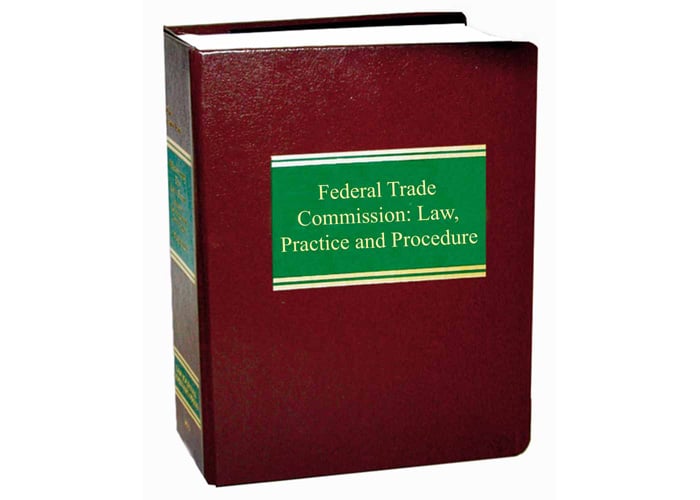The Federal Trade Commission (FTC) issued Notices of Penalty Offenses and cover letters to close to 700 advertisers of over-the-counter drugs, homeopathic products, dietary supplements, and even cereal foods on April 13, 2023. This move by the FTC puts advertisers on notice of their obligation to have adequate substantiation of their claims.
Notably, the FTC is not accusing businesses that found their way onto the FTC’s list of deceptive or unfair conduct. Still, these notices do put them on notice that failing to have adequate substantiation could subject them to civil penalties of up to $50,120 per violation in the first instance in a subsequent enforcement action. In that way, these notices are a means for the FTC to side-step the Supreme Court’s decision in AMG Capital Management v. FTC, which stripped the FTC of its ability to seek equitable monetary relief in cases under Section 13(b) of the FTC Act.
This is the fourth set of these notices since Chair Lina Kahn took the reins of the FTC in 2021. Prior notices in that timeframe related to money-making opportunities, endorsements and testimonials, and for-profit colleges went to roughly 1,900 companies. What has emerged is a large and growing swath of companies – none of whom are accused of wrongdoing – being set up for civil penalties in standard advertising enforcement matters using a technique that had previously been dormant for decades.
The FTC is flexing its muscle, and it remains to be seen whether and to what extent the FTC will follow through and bring enforcement sweeps seeking large civil penalties. That said, given the effort it has expended to get this far, it does seem likely that more of these notices will be forthcoming and in a broader set of issues (perhaps including privacy and data security) and that the FTC will bring follow-up enforcement actions.
Under the FTC Act, product claims must be substantiated in order to avoid deception, in violation of the FTC Act. The FTC Policy Statement on Advertising Substantiation outlines specific substantiation standards, including having a reasonable basis consisting of competent and reliable evidence for objective product claims, having access to competent and reliable scientific evidence to support any health or safety claims, obtaining at least one human clinical trial to support any claims that a product is effective in curing, mitigating, or treating a serious disease, not misrepresenting the level or type of substantiation for claims, and not misrepresenting that a product claim has been scientifically or clinically proven.
The recipients of the advertising substantiation Notices of Penalty Offense letters also received a copy of a previously approved notice of penalty offense regarding the use of endorsements and testimonials, which addresses false endorsements, misrepresentation of the identity of endorsers, and the use of endorsements to make deceptive performance claims. The companies were also encouraged to review the FTC’s recent Health Product Compliance Guidance, which was issued in late 2022 and updated the FTC’s 1998 Dietary Supplements: An Advertising Guide for Industry guidance. The 2022 update demonstrates how to ensure that claims about the benefits of health-related products are not misleading and are substantiated appropriately.
The FTC reaffirmed its commitment to the underlying legal requirement of advertising substantiation, stating that advertisers and ad agencies must have a reasonable basis for advertising claims before they are disseminated. The Commission intends to continue vigorous enforcement of this existing legal requirement that advertisers substantiate express and implied claims, however conveyed, that make objective assertions about the item or service advertised.
Objective claims for products or services represent explicitly or by implication that the advertiser has a reasonable basis supporting these claims. These representations of substantiation are material to consumers. That is, consumers would be less likely to rely on claims for products and services if they knew the advertiser did not have a reasonable basis for believing them to be true. Therefore, a firm’s failure to adequately substantiate its claims can deceive consumers, harm competition, and violate the law.
The FTC’s recent actions send a clear message to advertisers that they must take their substantiation obligations seriously. Advertisers must have a reasonable basis for any objective claims they make about their products or services. This means that advertisers must have competent and reliable scientific evidence to support their claims, especially when it comes to health and safety claims.
The FTC’s Health Product Compliance Guidance, which was updated in late 2022, provides specific guidance to advertisers on how to ensure that their claims about health-related products are not misleading and are substantiated appropriately. Advertisers must ensure that their claims are supported by scientific evidence, including human clinical trials, and must not misrepresent the level or type of substantiation for their claims.
The FTC’s recent enforcement actions also serve as a reminder to advertisers that they must be careful when using endorsements and testimonials in their advertising. Advertisers must ensure that their endorsements and testimonials are truthful and not misleading, and that they do not misrepresent the identity of endorsers or use endorsements to make deceptive performance claims.
The Federal Trade Commission’s recent notices of penalty offenses for inadequate substantiation of advertising claims have highlighted the importance of understanding the FTC’s requirements. In this regard, the FTC has identified several persistent myths regarding substantiation that can lead to non-compliance. The first myth is that having a couple of studies supporting a claim is sufficient substantiation. The FTC clarified that the totality of evidence, including independent studies, must be evaluated to determine if a claim is substantiated.
The second myth is that claims for products with real benefits do not require substantiation. The FTC emphasized that even products with real benefits must have a reasonable basis, as illustrated by a recent consent order against NordicTrack, which made unsubstantiated weight loss claims despite using studies with methodological flaws. The third myth is that testimonials are sufficient substantiation for health-related claims. The FTC has explicitly rejected this as substantiation and considers anecdotal evidence in assessing the scope of injury to consumers.
The fourth myth is that endorsements are valid if the endorsers genuinely use and like the product. The FTC explained that the use of consumer testimonials gives rise to a “typicality” claim, which must be substantiated or qualified with a clear disclosure of the generally expected results. The fifth myth is that disclosures that flatly contradict a deceptive claim immunize a company from liability. The FTC advised that it looks at the net impression created by an advertisement and recommended narrowing claims to what can be substantiated. Finally, the sixth myth is that “results may vary” is an adequate disclosure. The FTC explained that this is not the case and warned against using this as a disclaimer.
Also, the FTC clarified that claims about dietary supplements are regulated by both the FDA and the FTC. While the FDA has responsibility for label claims, the FTC seeks to ensure that claims made in advertising do not deceive consumers. The FTC advised that the manufacturer must have substantiation that structure and function claims are truthful and not misleading. A special Commission on Dietary Supplement Labels is evaluating the evidence that the FDA will require as substantiation and has consulted the FTC about its policies for substantiation of advertising claims for dietary supplements.
Advertisers must also be careful when making claims about the benefits of their products or services. They must ensure that these claims are substantiated appropriately and are not misleading. Advertisers must not make false or misleading claims about the safety, efficacy, or performance of their products or services.






















